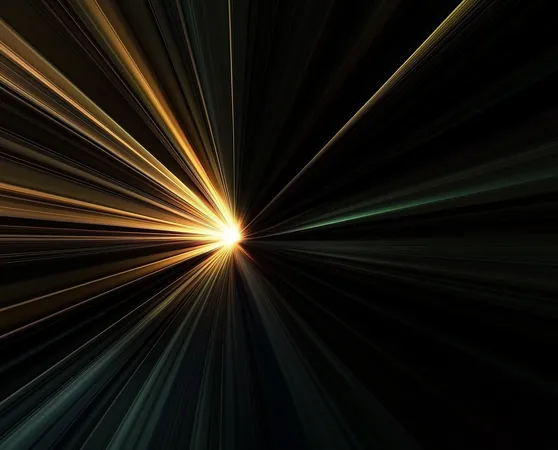
Unmasking the Enemies Within: How Radiation Threatens Quantum Qubits and What Researchers are Doing About It!
2024-11-13
Author: Jia
The Silent Saboteurs: Understanding Radiation's Threat
Superconducting qubits are designed to operate at temperatures nearing absolute zero, creating an ideal environment where these quantum bits can thrive without the interference of thermal noise. However, lurking in this cold sanctuary is an insidious foe: background radiation. This radiation, originating from radioactive isotopes found in the earth and building materials, along with cosmic rays traveling from deep space, introduces instability through a process called decoherence. This phenomenon essentially disrupts the delicate quantum states that are essential for accurate computations, making the fight against radiation critical for successful quantum computing.
The study has pinpointed specific radiation sources, such as gamma rays emitted from isotopes like potassium-40 and thorium-232, which contribute to the persistent low-level radiation found in many laboratory environments. Cosmic rays, while less frequent, can also cause disruptive energy events that impact qubit performance.
Experimentation Unveils Counterintuitive Findings
To investigate these radiation interactions, the researchers employed a thermal kinetic inductance detector integrated within varying thicknesses of silicon substrates—specifically, 500 and 1500 micrometers. Contrary to expectations, they discovered that thicker substrates absorbed more radiation, leading to a higher rate of energy deposition. For instance, the thicker substrate displayed an event rate nearly three times that of its thinner counterpart. This surprising revelation suggests that a reduction in substrate thickness could greatly improve qubit stability and performance.
Paving the Way for Resilient Quantum Designs
With the results of this study, NIST researchers offer a beacon of hope for the future of quantum computing. They recommend that quantum laboratories evaluate local radiation conditions and experiment with innovative shielding materials to mitigate the negative impacts of radiation. Although cosmic rays present a formidable challenge, especially due to their high-energy nature, the researchers emphasize the importance of optimizing circuit designs to enhance resilience against radiation-induced errors.
Furthermore, site-specific battery measurements and customized shielding solutions could play substantial roles in determining how different environments impact quantum coherence, ultimately leading to improved error-correction methodologies.
Looking Ahead: A Quantum Leap Towards Stability
As researchers continue to unravel the complexities of radiation effects on superconducting qubits, it becomes increasingly clear that addressing these challenges is integral to realizing the full potential of quantum computing technology. Each incremental advancement, including understanding and countering external disturbances like natural radiation, brings us closer to unlocking breakthroughs that could revolutionize information processing and technology.
Stay tuned for more insights as the quantum frontier pushes forward—who knows what other threats await in the shadows of our technological advancements?


 Brasil (PT)
Brasil (PT)
 Canada (EN)
Canada (EN)
 Chile (ES)
Chile (ES)
 España (ES)
España (ES)
 France (FR)
France (FR)
 Hong Kong (EN)
Hong Kong (EN)
 Italia (IT)
Italia (IT)
 日本 (JA)
日本 (JA)
 Magyarország (HU)
Magyarország (HU)
 Norge (NO)
Norge (NO)
 Polska (PL)
Polska (PL)
 Schweiz (DE)
Schweiz (DE)
 Singapore (EN)
Singapore (EN)
 Sverige (SV)
Sverige (SV)
 Suomi (FI)
Suomi (FI)
 Türkiye (TR)
Türkiye (TR)